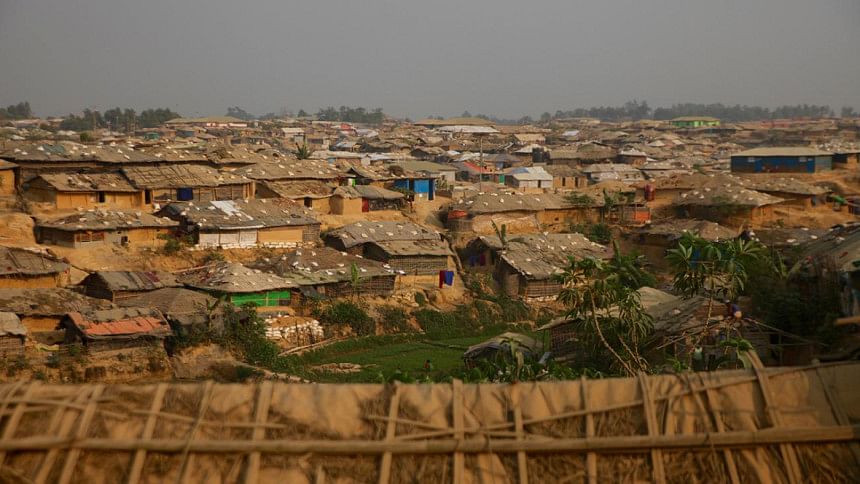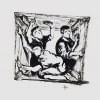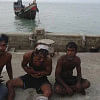Justice obstructed

Law enforcers had been nonchalant for years when thousands of Rohingyas and Bangladeshis were facing heinous crimes, including murders and burial in mass graves, in the bordering hilly regions of Thailand and Malaysia.
Though the Malaysian authorities discovered a camp and a possible mass gravesite in Wang Kelian of Perlis State on January 19, 2015, they destroyed the camp, which would have been useful to assist in the investigation and prosecution of the crimes, said Human Rights Commission of Malaysia (SUHAKAM) and Fortify Rights, a Southeast Asian rights platform, in a report on Wednesday.
“The four-month delay in investigating the gravesite delayed the exhumation of remains [in May 2015] from the site, which, in turn, hampered forensic specialists from identifying the causes of their death. This may constitute obstruction of justice,” it says.
Though the Malaysian police discovered hundreds of human trafficking victims in 2013 and 2014, they treated them as “undocumented foreign migrants” and sent them to immigration detention centers, instead of protecting them as trafficking survivors, said the 121-page report titled “Sold like fish”.
According to the report, more than 170,000 people, mostly Rohingyas, were trafficked by boats from Myanmar and Bangladesh to Malaysia and Thailand during 2012-15. In the camps in Thai and Malaysian border regions, human traffickers from Myanmar, Thailand and Malaysia had held them captive for ransom.
On April 30, 2015, the Thai authorities found more than 30 bodies in a mass grave near the Malaysian border. On May 25 that year, the Malaysian police announced discovery of 139 graves and 28 suspected human-trafficking camps in Wang Kelian.
The report documented how perpetrators brutally murdered or tortured the victims and then dumped their bodies in mass graves. In some cases, they forced captives to bury bodies, said the report based on more than 270 interviews with witnesses, survivors, human traffickers, government officials and others from 2012 to 2019.
It says there were gaps in the investigation and possible obstruction of justice in Malaysia's discovery of mass graves in 2015.
Details of official complicity in the human trafficking were documented in the report. It says Malaysian police in 2013 and 2014 arrested around 750 “undocumented foreign migrants” at the Kaki Bukit Police Station in Perlis State for illegal entry into Wang Kelian. These cases were investigated for immigration offenses and not as human-trafficking cases.
Villagers of Wang Kelian often encountered or at least saw the movement of South Asian-looking foreigners who were skinny and some of them had burned marks as if they were splashed with hot water. They notified police of “foreigners” in their village and that law enforcers often apprehended the foreigners but failed to conduct further investigations, which raises questions regarding the authorities' response, the report said.
“The authorities could have detected suspicious activities and discovered the human trafficking camp in Wang Kelian earlier if the information above and available data about 'undocumented foreign migrants' had been well distributed and coordinated among the relevant agencies.” the report observed.
Malaysia has convicted only four foreigners in connection with the Wang Kelian tragedy, while Thailand convicted 62 people, including nine Thai officials, of trafficking crimes in the human trafficking case.
Yet, testimonies of survivors and eyewitness indicate broader involvement or complicity by the Thai authorities in the trafficking case.
The report said at least some Thai authorities were aware of mass graves well before their May 1, 2015 announcement about the existence of a mass gravesite. For example, a low-level Rohingya human trafficker, 42, who also worked closely with the Thai authorities to combat trafficking, told Fortify Rights that he discovered graves alongside Thai authorities in 2013.
Testimony of the report reveals a widespread and systematic pattern of the Thai authorities transferring Rohingya refugees from the immigration detention centres and government-run shelters to a transnational criminal syndicate involved in human trafficking. The practice of selling Rohingya refugees to traffickers en masse took place for several consecutive years.
For example, survivor “Mohammed T” told Fortify Rights about his experience in a Thai immigration detention centre in Ranong after Thai authorities arrested him, then aged 18, and others from a human-trafficking camp on a mountain island in January 2013.
He said some local Muslims provided some food in detention, but later that stopped and they suffered a lot. In one room, there were 70 to 100 people. He was there for 11 months. Afterwards, the Thai authorities handed him and others over to human traffickers.
The survivor said the Thai authorities had weapons, but were not in uniforms when they handed the survivors over to traffickers. He spent several months in a human-trafficking camp on the Malaysia-Thailand border and witnessed multiple deaths, buried victims in mass graves as per directives of his captors. He eventually escaped and recovered in a mosque in southern Thailand.
In April 2015, Fortify Rights privately shared information about mass graves with senior Thai foreign ministry officials. On April 22, the rights body testified before US Congress on human trafficking in Thailand, Malaysia, and other countries.
The report said despite some measures of justice served through Thailand's mass human-trafficking trial, many of those involved in trafficking remain free or at large in the region.
Suhakam and Fortify Rights termed the crimes by the human trafficking syndicate as crimes against humanity and demanded further investigation and bringing to book all those involved in the heinous crimes.
According to BBC, an estimated 5,000 Rohingyas were living in Thailand and another 1.5 lakh in Malaysia in October 2017.

 For all latest news, follow The Daily Star's Google News channel.
For all latest news, follow The Daily Star's Google News channel. 








Comments